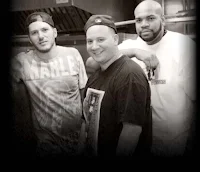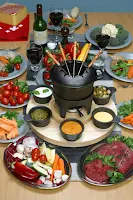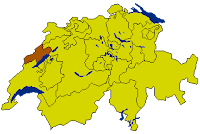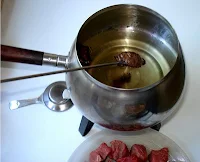Michael's first culinary job was into the family business. His father owned a bagel shop and he studied bagel-making at his father’s side, also doubling as a short order cook. He then learned more about the hospitality business at his cousin's pizzeria, Villa Borghese. The discovery of his natural palate and affinity for cooking led him to attend the Culinary Education Center in Asbury Park, NJ.
I asked him what led him to the Asbury Park school. He stated, "Well, I applied and was accepted at Johnston & Wales, but just before I started school my dad passed away and I just couldn't leave my mom all alone, "he remembered, "I transferred to the Education Center in Asbury Park so I could stay at home and be there for her. Once I got out in the work force, I realized, after having worked alongside those who attended so called 'more formal' culinary schools, we all learn the same basics, no matter the school. And truly, school only teaches you the basics, we chefs all learn by getting on the line at a busy restaurant and getting our asses kicked."
"My first real restaurant gig outside the pizzeria,' he explained, "was a restaurant called Aqua in Bound Brook. I was basically moving from station to station. I then moved myself up to Sous Chef. Brian Walter was the head chef, he had just come from Le Cirque, and we received 4 stars from the Star Ledger. We did great Italian food with French technique. All homemade pasta, super seasonal, super fresh." I asked him what was the biggest thing he learned from his first true commercial kitchen. He answered immediately, "Speed and organization." I then asked him what surprised him the most going from his cousin's pizzeria kitchen to Aqua. "Doing 200 covers and having to get the food out." he laughed, "You were responsible for your station and you needed to be on your game and get your food out. But, it prepared me for for my next gig, so it was a good first experience."
 From Aqua, Colletti then moved on to work with New York restaurant icon Sirio Maccioni of the world renowned Le Cirque. Not bad for a young chef's second gig. He expounded on the experience of working in the high profile restaurant's kitchen. "At Le Cirque, it was a bit more slow paced, but much more exacting with regard to technique and presentation. I learned a lot about the science behind food and it made me more detailed. Sirio is old school, so I learned about the tried and true ways to prepare food. It was there that I met Spike Mendelsohn. We worked side by side and really got along well. Spike decided to move on to a new restaurant being opened by Drew Nieporent and Michael Bao, Mai House, also in NYC."
From Aqua, Colletti then moved on to work with New York restaurant icon Sirio Maccioni of the world renowned Le Cirque. Not bad for a young chef's second gig. He expounded on the experience of working in the high profile restaurant's kitchen. "At Le Cirque, it was a bit more slow paced, but much more exacting with regard to technique and presentation. I learned a lot about the science behind food and it made me more detailed. Sirio is old school, so I learned about the tried and true ways to prepare food. It was there that I met Spike Mendelsohn. We worked side by side and really got along well. Spike decided to move on to a new restaurant being opened by Drew Nieporent and Michael Bao, Mai House, also in NYC."He explains, "I did not really know much about Vietnamese cuisine and I thought, you know, always thinking of building up my resume and experience as a chef, that this would be a great opportunity to expand my knowledge." During Chef Colletti’s tenure as Chef de Cuisine at Mai House, the restaurant was awarded two stars by Frank Bruni of The New York Times and named among the Top 10 Best Restaurants in New York City by The New York Times. He spent more than two years at Mai House; during which Colletti traveled throughout Vietnam for several months to study the local food and culture and was chosen to guest chef at the 5-Star Renaissance Hotel in Kuala Lumpur, Malaysia. He talked about the experience.
 |
| Chef Colletti's Day Boat Scallops |
After five years in New York, he decided to join Mendelsohn in Washington D.C. at the Sunnyside Group. There he would play a vital role in the conceptualization of Chef Mendelsohn's restaurant, Good Stuff Eatery, located in Capitol Hill. He explained, "Spike's parents opened up a spot in DC and Spike asked me to join him. I was really into the conceptualization of the place. The decor, the menu building." During this time Spike gained national acclaim with his being on TV. With the national success of Good Stuff Eatery, Chef Colletti was invited to participate in Food Network’s 2009 Food & Wine Festival's “Rachel Ray Burger Bash,” in both Miami and New York, where he earned back-to-back victories for his creation of the “Colletti Smokehouse Burger." Food Network then invited Chef Mendelssohn and Chef Colletti to compete in an episode of Iron Chef America, where they would “Battle Prosciutto” versus Chef Michael Symon. The episode that aired in March 2010.
Chef Colletti was then given responsibility for opening and overseeing operations at the second Spike Mendelsohn venture, We, The Pizza, also in Capitol Hill. It became an instant sensation and within three months of opening was voted one of the “Top 50 Best Pizzerias in America” by USA TODAY.
First Lady Michelle Obama, a frequent visitor and supporter of both restaurants, requested Chef Colletti participate in preparing several White House luncheons serving the President and staff members. Through this affiliation, he became part of the “Lets Move!” campaign created by Mrs. Obama to combat childhood obesity. In addition, while living in Washington, D.C., Chef Colletti was proud to be involved with Horton’s Kids Foundation and D.C. Central Kitchen. As a result of his supportive efforts, Chef Colletti was asked to attend the 2011 Capitol Food Fight, in which he was awarded second place by celebrity chefs Anthony Bourdain, Eric Ripert, Tom Colicchio and José Andrés.
After three successful years in Washington, D.C., he decided to move back to his home state of New Jersey to pursue his own restaurant vision with his cousins. The resulting collaboration is VB3 Restaurant and Bar located in Jersey City in The Monaco, a luxury apartment building on Jersey City's waterfront. Carrying on the important garden to table tradition of his family, the restaurant features Chef Colletti’s creative, Modern Seasonal Italian cuisine, based on family recipes using locally-sourced ingredients. "From the moment I decided to do this it was a blast," he said excitedly. "My own concepts, my own menu, falling back on my roots and my heritage. Taking the old Italian classics and making them into this modern cuisine, using French techniques." He continued. "I was thrilled to be back in NJ. It's my home. Friends and family are here. My roots."
About the VB3 direction and concept he told me, "We spent a lot of time figuring out the concept," he continued, "what the area needed. We decided on serious food with serious nightlife. VB3 has 80 seats in the dining room and 30 at the bar. We're open till
 3AM Monday through Sunday, so our philosophy is; 'Come for the Food...Stay for the Party.' It's a very relaxed atmosphere, not stuffy at all, but with incredible food coming out of the kitchen. Most patrons are quite surprised, but that's a good thing. The menu is seasonal and focused on local, fresh farm to table ingredients. It (the menu) speaks for my cooking style. At the same time it has to be accessible to the main stream dining public. We're flanked by two hotels, so while I'm doing fresh, exciting interpretations of classic dishes, it's still recognizable to what we all know as comfort food."
3AM Monday through Sunday, so our philosophy is; 'Come for the Food...Stay for the Party.' It's a very relaxed atmosphere, not stuffy at all, but with incredible food coming out of the kitchen. Most patrons are quite surprised, but that's a good thing. The menu is seasonal and focused on local, fresh farm to table ingredients. It (the menu) speaks for my cooking style. At the same time it has to be accessible to the main stream dining public. We're flanked by two hotels, so while I'm doing fresh, exciting interpretations of classic dishes, it's still recognizable to what we all know as comfort food."Actually friends, take my word for it, it's amazing.
Bon Appetit,





















